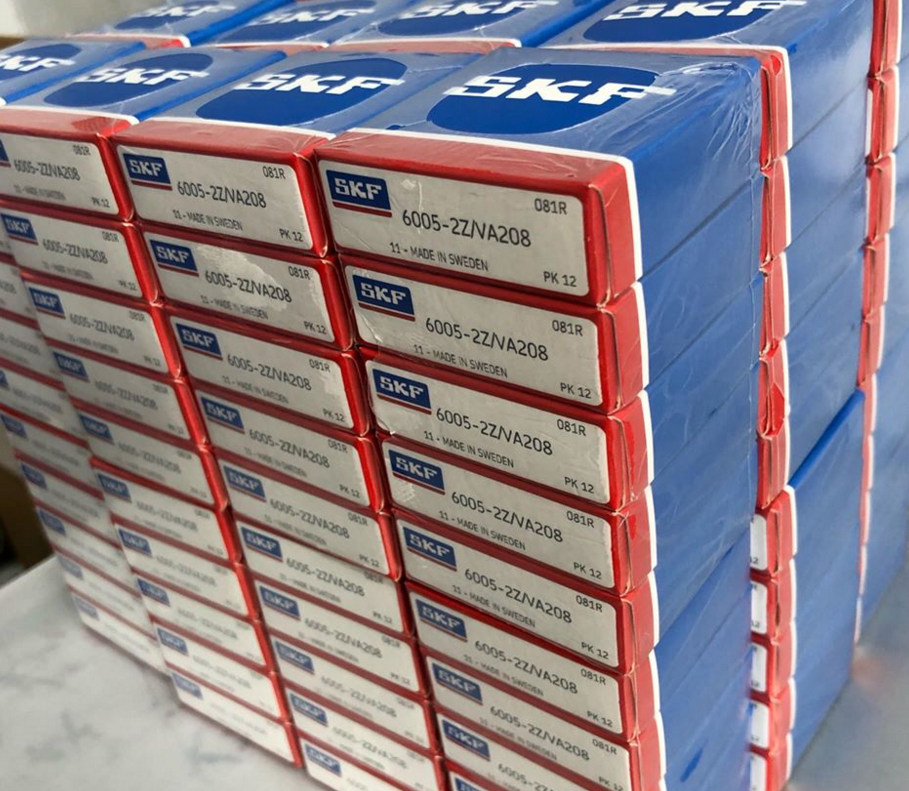
 News
News
The correct and reasonable use of bearings is a systematic project. In the process of bearing structure design, manufacturing and installation, corresponding measures are taken for the links that produce early failures, which can effectively increase the service life of bearings and the host.
1. Peeling from the extreme position of one side of the channel
The spalling at the extreme position of one side of the channel is mainly manifested in the severe spalling ring at the junction of the channel and the rib. The cause is that the bearing is not installed properly or the axial overload occurs suddenly during operation.
The countermeasures taken are to ensure that the bearing is installed in place or to change the fit of the outer ring of the free-side bearing to a clearance fit in order to compensate the bearing when the bearing is overloaded. If the installation cannot be ensured in place, you can increase the thickness of the lubricant film (increasing the viscosity of the lubricating oil), or reduce the bearing load to reduce the direct contact of the bearing.
2. The channel peels off in a symmetrical position in the circumferential direction
Peeling in symmetrical position means that the inner ring is peeling off from the surrounding annulus, while the outer ring is peeling in a circumferentially symmetrical position (that is, the short axis direction of the ellipse). It is particularly evident in camshaft bearings for motorcycles. When the bearing is pressed into the housing hole with a large ellipse or the two-half split housing is tightened, the outer ring of the bearing produces an ellipse, and the clearance in the short axis direction is significantly reduced or even negative. Under the effect of the load, the inner ring rotates to produce circumferential peeling marks, and the outer ring only produces peeling marks at symmetrical positions in the short axis direction. This is the main reason for the early failure of the bearing. Examination of the failed parts of the bearing shows that the outer diameter roundness of the bearing has changed from 0.8um controlled by the original process to 27um. This value is much larger than the radial clearance value. Therefore, it can be affirmed that the bearing is working under severe deformation and negative clearance, and abnormal sharp wear and peeling are likely to form early on the working surface.
The countermeasures adopted are to improve the processing accuracy of the shell hole or to avoid the separation structure of the shell hole halves as much as possible.
3. The raceway inclines and peels off
The inclined peeling ring belt on the working surface of the bearing shows that the bearing works in a tilted state. When the tilt angle reaches or exceeds the critical state, it is easy to form abnormal sharp wear and peeling at an early stage. The main reason is that the installation is poor, the shaft has deflection, and the precision of the journal and the housing hole is low.
Take measures to ensure the quality of bearing installation and improve the axial runout accuracy of shaft shoulder and hole shoulder, or increase the viscosity of lubricating oil to obtain a thicker lubricating film.
Click here for more details about SKF 6005-2Z/VA208.

4. Ferrule break
The failure of ferrule fracture is relatively rare, usually caused by sudden overload. The causes are more complicated, such as bearing raw material defects (bubble shrinkage), forging defects (overburning), heat treatment defects (overheating), processing defects (local burns or surface micro cracks), host defects (poor installation, poor lubrication, instant Overload) etc. The ferrule may break due to overload shock load or severe vibration.
The countermeasures adopted are to avoid overload impact load, choose appropriate interference, improve installation accuracy, improve service conditions and strengthen quality control in the bearing manufacturing process.
5.Bruise
The term “scratch” refers to surface damage that occurs on the raceway surface and rolling surface due to the sum of micro-burns caused by rolling slippage and oil film thermal cracking. A rough surface with adhesion is produced. The main causes of scratches are high-speed light load, rapid acceleration and deceleration, inappropriate lubricant, and water intrusion.
Solution: Improve preload, improve bearing clearance, use lubricant with good oil film, improve lubrication method, improve sealing device, etc.
6.Indentation
When small metal powders or foreign objects are bitten, concaves (brinell indentations) are formed on the pitch of rolling elements due to the dents generated on the raceway surface or the rotating surface or due to impact during installation. The main factors that cause indentation are: bites of foreign materials such as metal powder, impact load during assembly or transportation is too large.
Solution: Improve the sealing device, filter the lubricating oil, improve the assembly and use method, etc.
In addition to the common failure modes mentioned above, there are many failure modes of rolling bearings in actual operation, which need further analysis and research. In summary, from the common failure mechanism and failure mode of bearings, although rolling bearings are a precise and reliable mechanism foundation, improper use can also cause early failure. If the bearing can be used correctly, it can be used until the fatigue life.